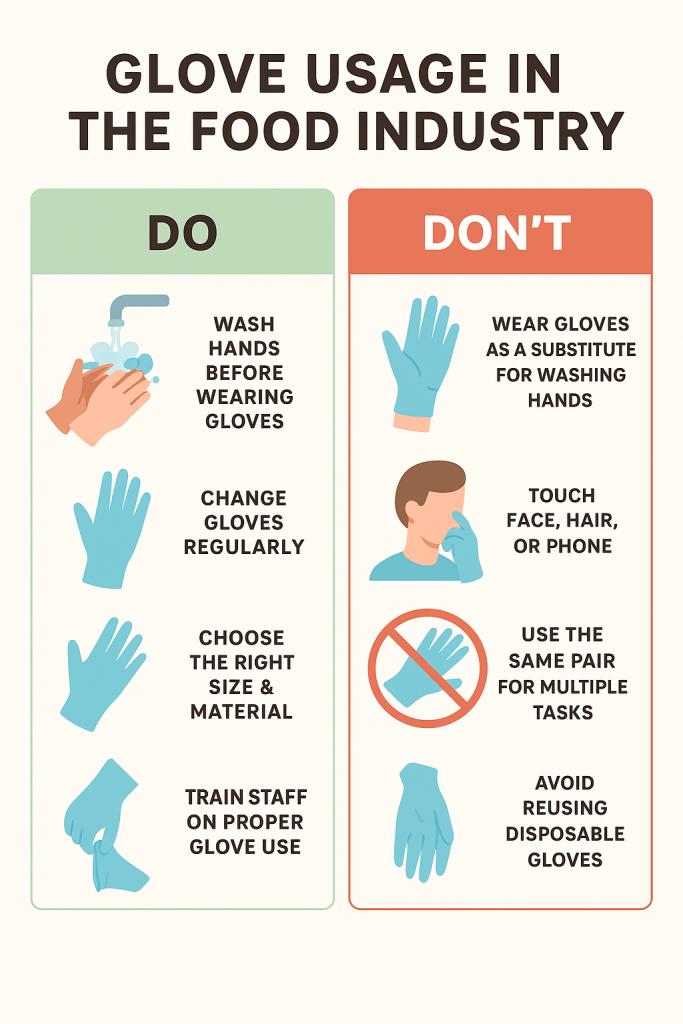
In the fast-paced world of food production and handling, glove usage in the food industry plays a crucial role in ensuring hygiene, preventing contamination, and complying with food safety regulations. While gloves can significantly reduce the risk of foodborne illnesses, incorrect usage can have the opposite effect—spreading contamination instead of preventing it.
Why Gloves Are Important in the Food Industry
Gloves act as a protective barrier between the food handler’s hands and the food. This helps:
-
Prevent cross-contamination between raw and cooked products.
-
Reduce direct hand contact with ready-to-eat food.
-
Meet regulatory compliance requirements set by ISO 22000, BRCGS, HACCP, and local health authorities.
However, gloves are not a substitute for handwashing. Hands should always be washed before wearing gloves and after removing them.
Types of Gloves Used in Food Handling
-
Disposable Latex Gloves – Flexible and comfortable but not suitable for people with latex allergies.
-
Nitrile Gloves – Durable, resistant to oils and chemicals, and hypoallergenic.
-
Vinyl Gloves – Affordable, suitable for short-term use, but less durable.
-
Polyethylene Gloves – Loose-fitting, ideal for quick tasks like serving food.
Best Practices for Glove Usage in the Food Industry
1. Wash Hands Before Wearing Gloves
Even with gloves, unwashed hands can transfer bacteria when putting them on.
2. Change Gloves Regularly
-
Between handling raw and cooked food.
-
After touching contaminated surfaces.
-
Every 2–4 hours during continuous use.
3. Choose the Right Size and Material
Poorly fitting gloves can tear easily or reduce dexterity.
4. Avoid Reusing Disposable Gloves
Single-use gloves are meant for one-time use only.
5. Train Staff on Proper Glove Practices
Staff should understand when to change gloves, how to remove them without contamination, and why they’re essential for food safety.
Common Mistakes in Glove Usage
-
Wearing gloves as a substitute for washing hands.
-
Touching face, hair, or phones while wearing gloves.
-
Using the same pair for multiple tasks.
These errors can increase contamination risks rather than prevent them.
Regulatory Requirements
Most international food safety standards, including ISO 22000, BRCGS Food Safety, and HACCP, require food handlers to wear gloves when handling ready-to-eat foods and to maintain strict hygiene protocols. Local health departments may also have specific rules on glove types and usage frequency.
Conclusion
Proper glove usage in the food industry is not just about wearing them—it’s about wearing them correctly. When combined with hand hygiene, staff training, and regular glove changes, gloves become a powerful tool in ensuring food safety, maintaining customer trust, and meeting compliance requirements.
